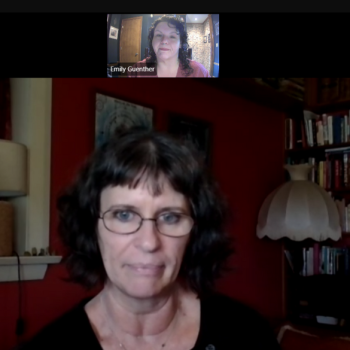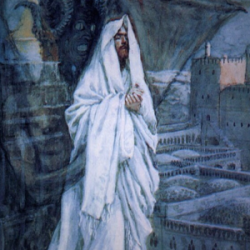Editor's Note: This is a part of a multi-part series on Christians in the Middle East. See Dr. Werthmuller's comments on Egypt here and here, as well as his introduction to the series.
On a hill above the ancient, well-worn route between Aleppo and the Syria border with Turkey, one can easily tramp up to the ruins of what was once a massive basilica complex from Late Antiquity. The now-dilapidated Byzantine structure was originally built around the site of one of the most colorful and influential figures of 5th-century Christianity: Simeon the Stylite, who spent decades—literally—sitting atop a stone pillar to demonstrate his ascetic commitment to Christ. One could easily read within these sad and magnificent ruins a broader symbolism of the fading light of Syrian Christianity, largely forgotten, or perhaps ignored, by Christians elsewhere in the world. To do so with mere resignation, however, is to commit the common mistake of valuing the Middle East only for its antiquities, instead of turning our eyes to those millions of Christ's followers who remain in Syria, comprising some 10 percent of the nation's 20 million inhabitants—and who are at particular risk from the current chaos enveloping the country.
Recognizing the unique religious diversity of Syrian society is the key to understanding the precarious position of the nation's Christian community amidst the present crisis.
Since the Middle Ages, the varied geography of Syria, like its smaller Lebanese neighbor to the west (which were not separate political entities until less than a century ago), has tended to attract the settlement of religious sects on the fringes of "mainstream" (e.g., Sunni Arab) Middle Eastern society. In this context, the Sunni majority surrounds not just one ethnic or religious minority—unlike the context of the Egyptian Copts—but rather a whole series of historically marginalized communities: Kurds, Druzes, Alawis, Circassians, Ismailis, and others. In Syria, these groups could find isolation when necessary, like Mt. Druze, but still make use of the country's busy commercial routes, bustling urban centers, and fertile countryside.
Christians had understood this dynamic even before the 7th-century Islamic conquests, after which bilad al-sham ("the northern lands," or Greater Syria) came to represent the borderlands between Muslim and Byzantine rule. Assyrians, Armenians, Nestorians, and other Christian sects had been on the outs with Constantinople since the Council of Chalcedon in 451, and many of them sought refuge in the hills of Syria. They were joined by followers of the Greek Orthodox Church, still the largest proportion of Syria's Christians, and its smaller Greek Catholic (Melkite) offshoot that declared loyalty with Rome in the 18th century.
These communities suffered much over the centuries, from their precarious position in the line of fire during the Crusading era, to the ravages of the Mongol invasion in the 13th century, to painful Ottoman attempts to transition to modernity in the 19th century (which unsuccessfully tried to replace confessional identity with citizenship, to much controversy). But Syrian Christians also found opportunities to prosper as well: like the Maronites of Lebanon, they shared in the interests of European merchants who sought to trade with their co-religionists in the Levant. It is worth noting that these perceived economic advantages over Syrian Muslims served as the most important catalyst for outbreaks of anti-Christian violence in the early modern era.
By the 20th century, Christians shared with their Muslim and other neighbors in the tumultuous emergence of Syria as a modern nation-state, from the collapse of Ottoman power in 1920, which had ruled there since the 16th century, to the process of independence from post-WWI French mandate authorities between 1936 and 1944, and beyond the humiliation defeat by the newly-created State of Israel in 1948. In the midst of these events, Syrian Christians were among the most influential writers and ideologues of the day: George Antonius, a British-Syrian diplomat who wrote The Arab Awakening in 1938, and Michel Aflaq, who co-founded the Arab Socialist Ba'ath Party in 1947, were among those who picked up the earlier work of Syrian journalists in articulating and fueling the burgeoning Arab Nationalist movement. This was a matter of ideological commitment, but also of inclusion: for many Syrian Christian intellectuals of the era, Pan-Arabism was a way of highlighting and translating into political reality an Arab cultural identity (despite its shaky foundations) over a specifically religious one that has traditionally excluded non-Muslim minorities.




